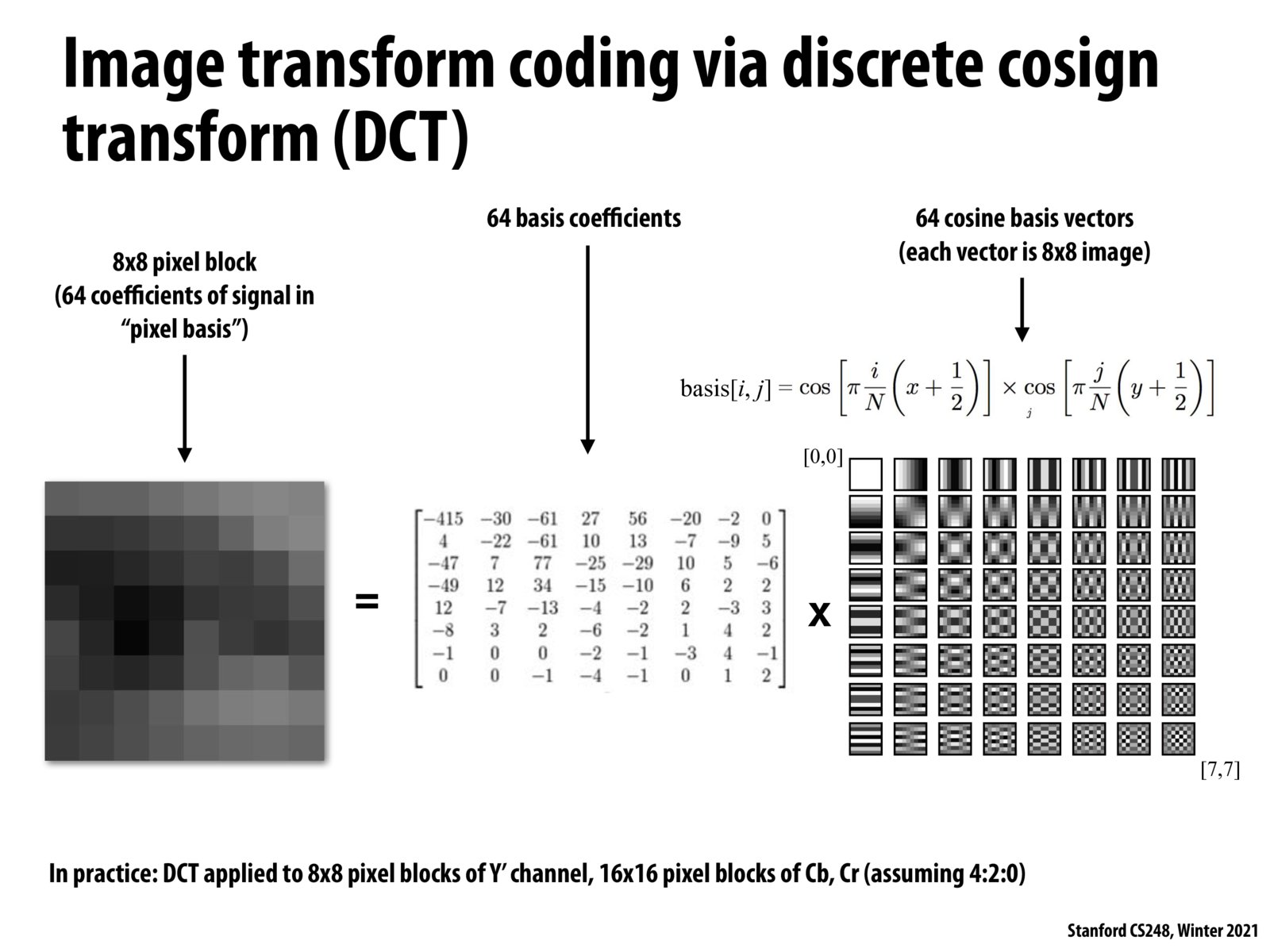
Back to Lecture Thumbnails

xiubaohui

sagoyal
Also here's a cool Computerphilevideo I found that covers similar topics and goes into much more detail about jpeg image compression works

mrn
What does the x and y represent in the basis formula?

movissup2
@mrn, x and y represent the pixel coordinate of 8 x 8 base images.

se2
@sagoyal that video answered a lot of questions I had about this slide, thank you!!

manuforo
How do we apply this to colored images?

amallery
Would you just store coefficients for each of the converted Y, Cb, Cr channels?
Please log in to leave a comment.
Copyright 2021 Stanford University
With the discrete cosign transform matrix, every pixel can be represented by mutiple cosign images for easier quantify.